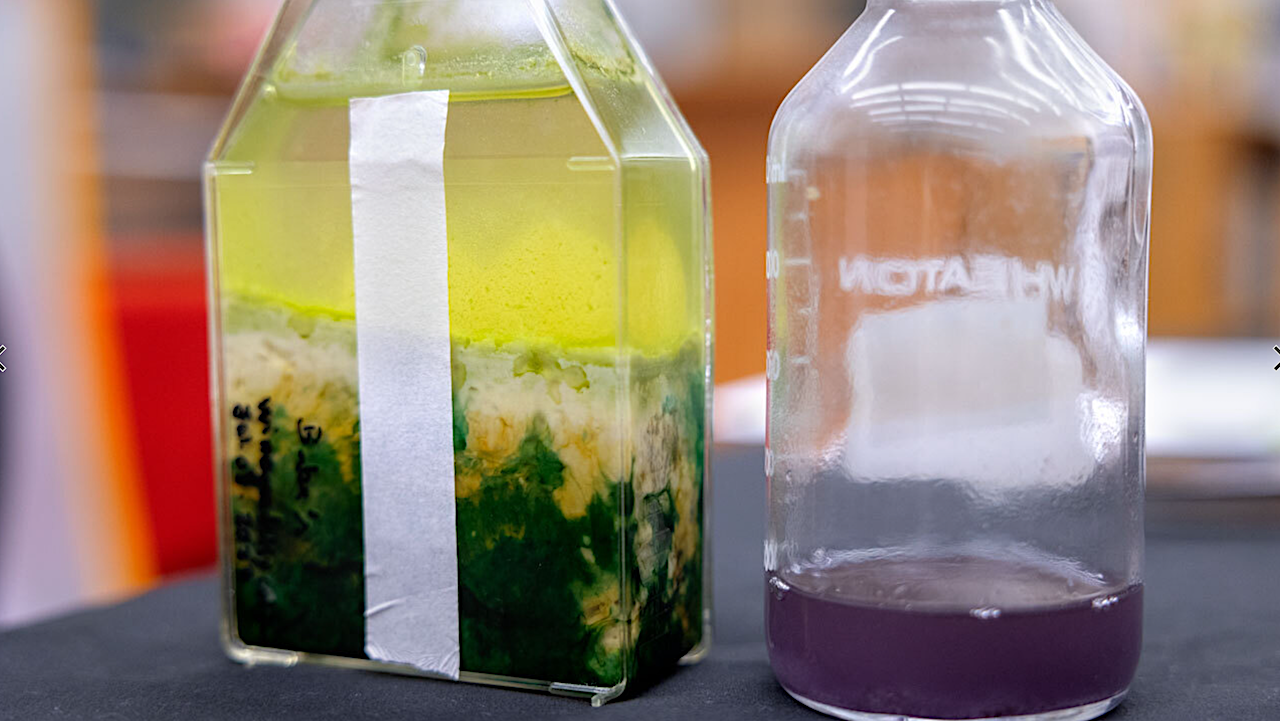Using life on Earth as a reference point, researchers are systematically documenting the hues and chemical markers that a wide array of organisms and minerals could exhibit in the reflected light of an exoplanet. Credit: Ryan Young/Cornell University
In the quest to identify signs of life beyond our planet, the traditional green color that we typically associate with life on Earth may not be the most reliable indicator. A planet resembling Earth orbiting a different star might display a vastly different appearance, potentially cloaked in bacteria that harness invisible infrared radiation for photosynthesis.
Numerous bacteria on Earth possess purple pigments, and planets where these bacteria dominate would emit a unique “light signature” detectable by advanced telescopes on the ground and in space, as outlined in a new study by scientists from Cornell University.
“Purple bacteria have the ability to thrive in diverse environments, positioning them as strong candidates for life that could flourish on various planets,” stated Lígia Fonseca Coelho, a postdoctoral associate at the Carl Sagan Institute (CSI) and the lead author of the research paper titled “Purple is the New Green: Biopigments and Spectra of Earth-like Purple Worlds.”
To ensure that our telescopes can identify potential life forms that may not resemble familiar Earthly life, co-author Lisa Kaltenegger, CSI director and associate professor of astronomy, emphasized the importance of establishing a database for life indicators.
The team of scientists, drawing inspiration from life on Earth, is actively compiling information on the colors and chemical signatures that a diverse range of organisms and minerals would exhibit in the reflected light of an exoplanet.
The organisms collectively known as purple bacteria actually display a spectrum of colors, including yellow, orange, brown, and red, attributed to pigments akin to those found in tomatoes and carrots. These bacteria thrive on low-energy red or infrared light, utilizing simpler photosynthesis mechanisms with chlorophyll variants that absorb infrared light and do not produce oxygen. The researchers suggest that these bacteria were likely prevalent on early Earth prior to the emergence of plant-based photosynthesis and could be well-suited for planets orbiting cooler red dwarf stars, which are abundant in our galaxy.
Coelho highlighted, “In specific niches, purple bacteria already thrive. Imagine the ideal conditions for their photosynthesis under a red sun without competition from green plants, algae, or bacteria.”
Following the analysis of the biopigments and light signatures of purple bacteria, the researchers developed models of Earth-like planets under various conditions and cloud coverage. In a range of simulated environments, both wet and dry purple bacteria exhibited vividly colored biosignatures.
Coelho noted, “Whether flourishing on a frozen Earth, an ocean world, a snowball Earth, or a modern Earth orbiting a cooler star, purple bacteria could leave discernible traces that we can now detect.”
The discovery of a “pale purple dot” in a distant solar system would prompt detailed observations of the planet to differentiate between potential sources of color, such as vibrant minerals, which are also being cataloged by the CSI. Kaltenegger, the author of the upcoming book “Alien Earths: The New Science of Planet Hunting in the Cosmos,” emphasized the complexity of detecting life with current technology, suggesting that the presence of even single-celled organisms on a planet would imply a broader prevalence of life in the universe, challenging the age-old question of our cosmic solitude.
As Kaltenegger expressed, “We are just beginning to explore the intriguing worlds surrounding us. The adaptability of purple bacteria to diverse conditions sparks the imagination that on numerous planets, purple could indeed be the new green.”
The research received support from a Fulbright Schuman grant, the Brinson Foundation, and the National Science Foundation.
Astrobiology
